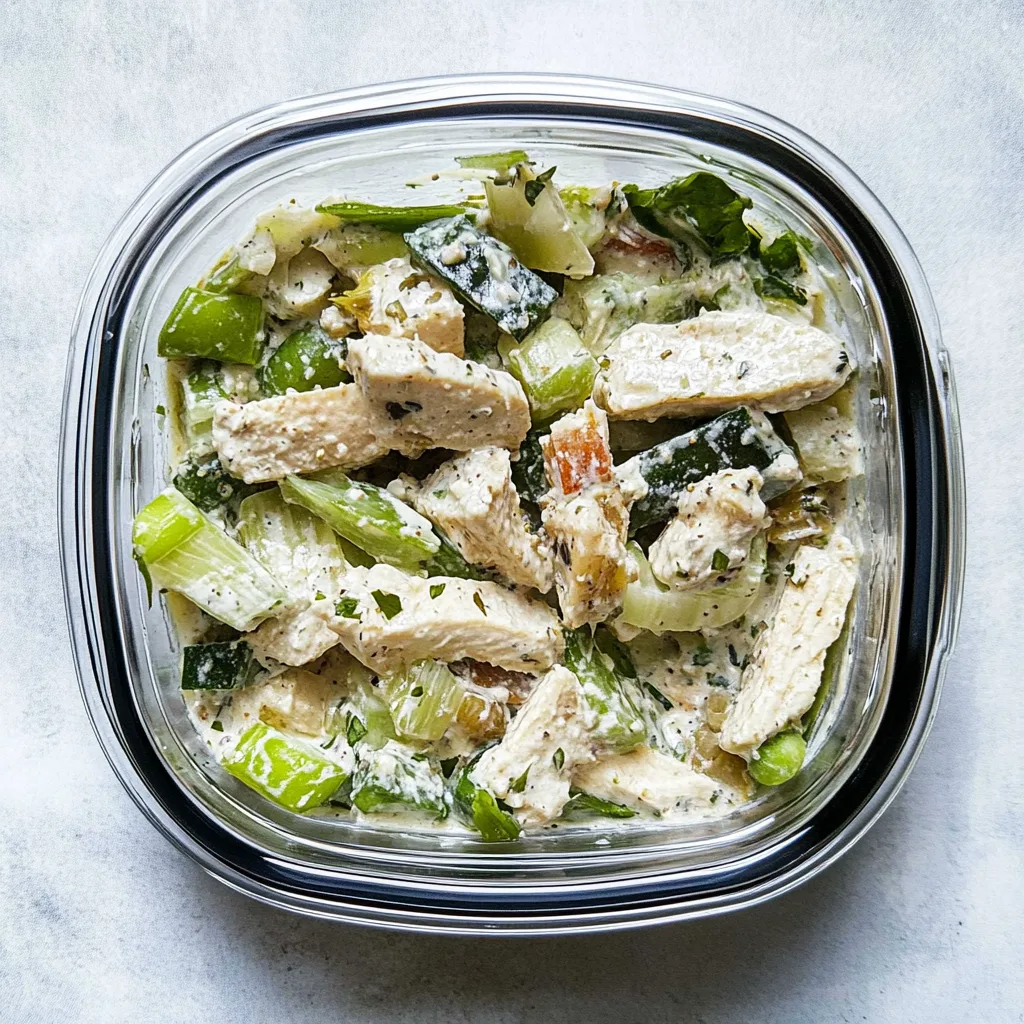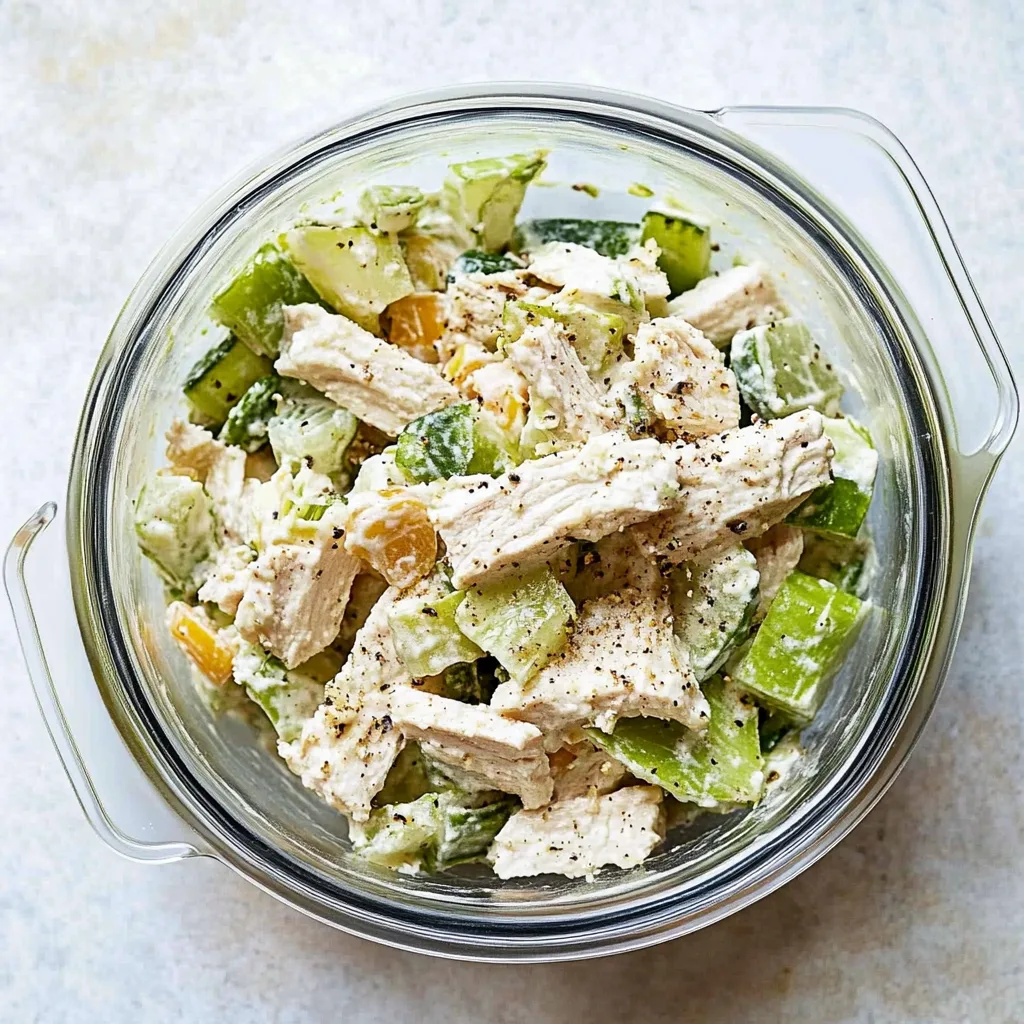Chicken salad is a popular and versatile dish enjoyed by many. Whether it’s a staple for meal prep or a party favorite, knowing how to store it safely is crucial to avoid food waste and potential health risks. This article dives deep into how long chicken salad lasts in the fridge, what factors impact its shelf life, and how to properly store it to keep it fresh for as long as possible. We’ll also discuss how to tell if it has gone bad and provide answers to frequently asked questions.
Table of Contents
Understanding Chicken Salad Shelf Life
What Factors Influence Chicken Salad’s Longevity?
The freshness of chicken salad depends on several factors, such as the ingredients used, storage methods, and even the temperature of your fridge. Typically, homemade chicken salad that’s stored properly lasts about 3-5 days in the fridge.
- Ingredients Used in Chicken Salad
The type of ingredients plays a huge role in its shelf life. Salads made with mayonnaise tend to spoil faster compared to oil-based dressings because mayo is more prone to bacterial growth. Additionally, any fresh veggies like celery or onions might lose their crunchiness over time, contributing to spoilage. - Storage Conditions: Temperature and Containment
Proper storage is essential. Always keep chicken salad in an airtight container to prevent it from absorbing fridge odors and to limit air exposure. Also, the fridge should maintain a temperature below 40°F (4°C) to slow bacterial growth and ensure safety.
Why Does Chicken Salad Spoil?
Spoilage occurs due to natural breakdown and bacterial growth. Here’s why chicken salad doesn’t last forever:
- Bacterial Growth
When chicken salad is left in the danger zone of 40°F to 140°F for too long, harmful bacteria like Salmonella or Listeria can multiply rapidly. This is why refrigeration is non-negotiable. - Ingredient Breakdown Over Time
Moisture-rich ingredients like chicken and mayo degrade quicker when exposed to air, leading to an unpleasant taste or texture. This breakdown accelerates if storage practices aren’t up to par.
Understanding these factors helps you take the right steps to prolong freshness and avoid food waste. Proper storage and attention to ingredients can significantly improve your chicken salad’s shelf life, ensuring it stays safe and delicious for days.
Best Practice
Ideal Refrigeration Tips
Storing chicken salad the right way is key to keeping it fresh and safe to eat. If you’re wondering how long chicken salad lasts in the fridge, proper refrigeration can make all the difference. Start by using an airtight container. This prevents air from getting in, which could cause the salad to spoil faster.

Next, set your fridge temperature below 40°F (4°C). Cold temperatures slow the growth of harmful bacteria, extending the shelf life. Always refrigerate chicken salad promptly—don’t let it sit at room temperature for more than two hours. For added freshness, place the container on a shelf rather than in the fridge door, where temperatures fluctuate more.
Common Mistakes That Reduce Freshness
Even with the best intentions, some storage habits can ruin your chicken salad’s shelf life. Here are a few to avoid:
- Leaving the recipe Uncovered
Using an unsealed bowl might save time, but it exposes your salad to air and odors from other foods. This can lead to both spoilage and a less appetizing flavor. - Mixing and Storing at Room Temperature
If you prepare your chicken salad and leave it out on the counter too long before refrigerating, bacteria like Listeria and E. coli could grow. Always mix and store your salad immediately in the fridge.
Proper storage techniques go a long way in keeping your dish fresh and safe. By following these tips, you’ll ensure your chicken salad stays enjoyable for the full 3-5 days in the fridge.
How to Identify this recipe Has Gone Bad
Signs of Spoilage
How can you tell when chicken salad has overstayed its welcome? If you’ve ever thought, “How long does chicken salad last in the fridge?” understanding the signs of spoilage is essential. Here’s what to look for:
- Changes in Smell and Texture
Fresh chicken salad has a mild, pleasant aroma. If it starts smelling sour or funky, that’s a red flag. Similarly, a slimy or mushy texture is another sign it’s no longer good to eat. - Visible Mold or Discoloration
If you notice green, black, or white spots on your chicken salad, toss it immediately. Even small patches of mold indicate contamination and unsafe food.
Health Risks of Consuming Spoiled
Eating spoiled the recipe isn’t just unappetizing—it’s downright dangerous. Spoiled food can harbor bacteria like Salmonella and Staphylococcus aureus, which can cause food poisoning. Symptoms often include nausea, vomiting, diarrhea, and stomach cramps.
If in doubt, throw it out. Trust your senses, and don’t risk your health over questionable leftovers.
Identifying spoilage quickly can save you from unpleasant surprises. By paying attention to the smell, texture, and appearance of your chicken salad, you’ll avoid potential health risks and keep your meals enjoyable.
Extending the Shelf Life
Can You Freeze Chicken Salad?
yes—with some precautions. Freezing can extend its shelf life by up to three months, but it’s not without trade-offs. While freezing slows down bacterial growth, the texture of certain ingredients like mayonnaise and fresh vegetables may change.
- Freezing Tips and Precautions
To freeze chicken salad, use an airtight container or freezer-safe bag to prevent freezer burn. It’s also a good idea to divide it into smaller portions for easier thawing. Before freezing, avoid adding ingredients like lettuce or cucumbers, as they don’t freeze well. Instead, mix them in fresh after thawing. - How Freezing Affects Taste and Texture
While chicken itself freezes beautifully, mayo-based dressings may separate, causing a slightly watery or grainy texture. Consider using a yogurt or oil-based dressing if you plan to freeze your salad.
Creative Alternatives for Repurposing Leftover
Don’t want to freeze? Turn your leftovers into a new dish! Here are a couple of ideas:
- Cooking and Reheating as a New Dish
Use leftover chicken salad as a filling for a warm casserole or bake it into a puff pastry for a quick savory snack. - Using it as a Filling or Topping
Spread it on crackers for an appetizer or load it onto a baked potato for a hearty meal.
For more inspiration, check out this Arlington Chicken Salad Recipe to explore delicious variations and creative serving tips.
FAQs
How Long Does Homemade Chicken Salad Last in the Fridge?
Homemade chicken salad, when stored correctly in an airtight container, lasts about 3-5 days in the fridge. The exact time depends on factors like the freshness of the ingredients and whether it was refrigerated promptly.
Does the Type of Dressing Affect Shelf Life?
Yes, the dressing matters! Mayo-based salads have a shorter shelf life than oil-based or yogurt-based ones. The fats in mayo break down faster, especially if exposed to temperature fluctuations, while oil-based dressings tend to be more stable.
What to Do If this recipe Was Left Out Overnight?
Unfortunately, chicken salad left out at room temperature for more than two hours is unsafe to eat. Bacteria grow rapidly between 40°F and 140°F. When in doubt, throw it out—safety first!
How Can You Tell if Prepackaged Chicken Salad Is Still Good?
Prepackaged chicken salad usually comes with a “use by” or “best before” date. Even if it’s within that time frame, check for spoilage signs like a sour smell, off-putting taste, or a slimy texture. Remember, the fridge life is shortened once the package is opened.
Conclusion: Maximizing the Freshness of Chicken Salad
The Key to Enjoying Chicken Salad Safely
Understanding how to store chicken salad properly can help you prevent food waste and avoid foodborne illnesses. While homemade chicken salad typically lasts 3-5 days in the fridge when stored in an airtight container, its actual freshness depends on factors like the ingredients used, storage temperature, and whether it was promptly refrigerated. Keeping the fridge at or below 40°F (4°C) is crucial to slow bacterial growth and maintain food safety.
Another important aspect is recognizing signs of spoilage. If your chicken salad smells sour, has a slimy texture, or shows discoloration, it’s best to discard it immediately. Eating spoiled chicken salad can lead to food poisoning caused by bacteria like Salmonella and Listeria, which thrive in improperly stored foods.
Making the Most of Your Leftovers
If you’re looking for ways to extend the life of your chicken salad, freezing is an option, but it comes with trade-offs. Mayo-based dressings may separate and become watery upon thawing, so if you plan to freeze your chicken salad, consider using oil-based or yogurt-based dressings for better texture retention. Freezing in small portions also makes it easier to thaw only what you need, reducing waste.
For those who prefer not to freeze, repurposing leftovers into new dishes can be a smart way to enjoy every last bite. Try using your chicken salad as a sandwich filling, a topping for baked potatoes, or even as a stuffing for wraps. Pairing it with a simple pasta dish, like pasta roni recipes, can create a hearty and satisfying meal without extra effort.
Final Thoughts: Smart Storage, Better Meals
Proper storage is the key to keeping your chicken salad fresh, delicious, and safe to eat. Whether you’re preparing a large batch for meal prep or saving leftovers from a family dinner, following best practices for refrigeration and freezing ensures you get the most out of your food.
Additionally, pairing chicken salad with complementary sides, such as pasta roni recipes, roasted vegetables, or fresh greens, can elevate your meal while making it more satisfying. By staying mindful of storage times, using airtight containers, and being aware of spoilage signs, you can confidently enjoy your chicken salad without concerns.
